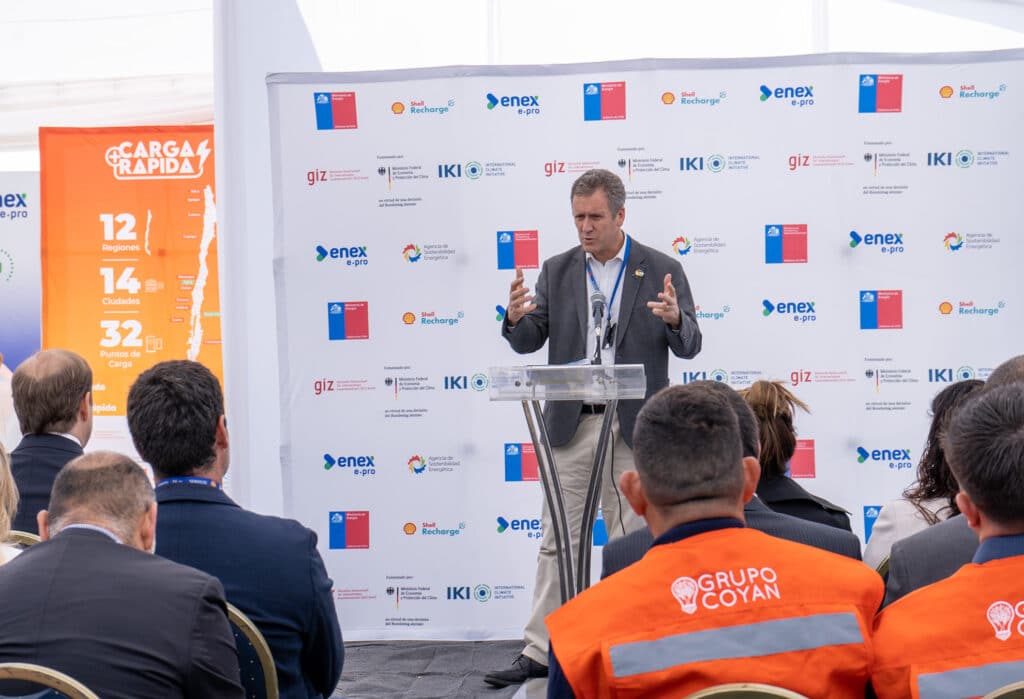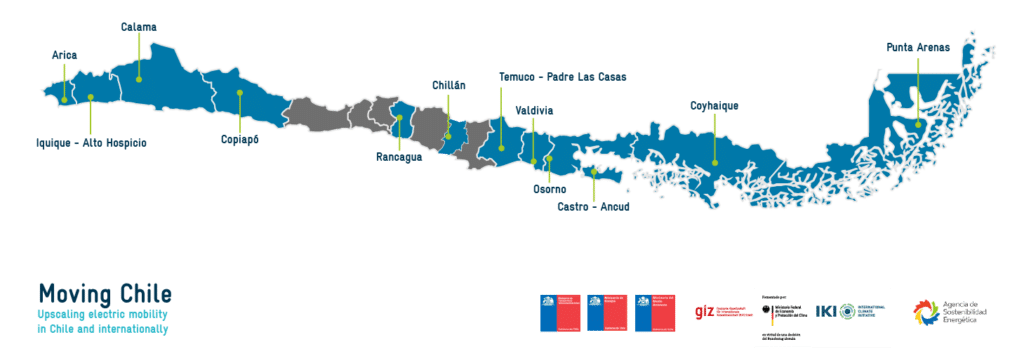
Rancagua was the first of the 14 cities with this public infrastructure that allows fully charging an electric vehicle between 10 and 20 minutes.
The electrification of public transport proposed by Chile in its National Electromobility Strategy involves not only the technological transformation of fleets but also the deployment of public and private infrastructure that enables the proper operation of buses and cars and encourages the adoption of this technology.
Thus, the +CargaRápida (More Fast Charge) programme is implementing fourteen fast charging stations in cities outside Santiago. The first was inaugurated by the Minister of Transport and Telecommunications, Juan Carlos Muñoz, and the Undersecretary of Energy, Luis Felipe Ramos, in the city of Rancagua.




This programme seeks to accelerate the adoption of electromobility in light-vehicle public transport by fostering public-private partnerships for the implementation of the infrastructure.
Through a public tender process by the Energy Sustainability Agency, the private sector applied for a co-financing of 25% of the implementation costs and the commitment to invest in and maintain these charging points.
Enex, (from the Shell group) was awarded the implementation of eight cities corresponding to 20 charging points (in the northern and central macro-zones). COPEC, Chilean fuel distribution company, was awarded the implementation of four cities and twelve charging points in the southern and southern zones.
Among the fast chargers installed, it can be highlighted the first on the large island of Chiloé and the southmost of the world, in the city of Punta Arenas.

In direct linkage with the My Electric Taxi programme from the country’s Ministry of Energy, which supports financing up until 50% of the electric taxis, this charging infrastructure will reduce drivers’ dependence on home charging and avoid the interruption of their journeys due to lack of energy.
Enex is delighted to be part of this important milestone for electromobility in our country […] Initiatives like this, which seek to bring electromobility to all regions of the country, are in line with our commitment to decentralize access to achieve coverage that reaches all of Chile. We hope that these instances of public-private collaboration will continue to be generated, bringing users benefits and promoting electromobility growth in the country. – Nicolás Correa, General Manager ENEX
Strengthening the electromobility environment outside the capital city
73.6% of public access chargers are in the Metropolitan Region, where the country’s capital is located, and this concentration is repeated with public access fast chargers, where it has 52.8% of them. Moreover, before the launch of the +Carga Rápida programme, six of Chile’s sixteen regions had no public access to fast chargers. Moreover, most of the existing public chargers only allow slow charging and are in periphery areas of the cities. The 14 chargers from the programme are deployed in centric areas, to facilitate the access of the users.
In particular, fast charging is vital to enable the operation of electric taxis and other vehicles using this technology, facilitating inter-city travel, provide charging options in emergencies, and ensure the correct operation of long-distance fleets within the urban radius (e.g., public transport fleets, delivery, taxis).
Thus, the newly implemented chargers will allow drivers to fully charge an electric vehicle in a time-varying between 10 and 20 minutes.
The implementation of the +CargaRápida programme was developed in the framework of the Moving Chile project, implemented by the German Cooperation through the Deutsche Gesellschaft für Internationale Zusammenarbeit (GIZ) GmbH and financed through the International Climate Initiative (IKI) of the German Federal Ministry of Economics and Climate Action (BMWK) in cooperation with the Ministries of Transport and Telecommunications, Energy and Environment and implemented by the Energy Sustainability Agency.
The remaining chargers in the network are being connected and built, with all 14 points planned to be operational by the beginning of 2024.
 Juan Carlos Muñoz, Minister of Transport and Telecommunications, inaugurating the first station in the city of Rancagua © GIZ
Juan Carlos Muñoz, Minister of Transport and Telecommunications, inaugurating the first station in the city of Rancagua © GIZ
Macarena Castillo, Santiago
macarena.castillo@giz.deVisit profile
You are currently viewing a placeholder content from X. To access the actual content, click the button below. Please note that doing so will share data with third-party providers.
More Information